-
Best Ornamental Grasses for small & large Gardens
 Lee Burkhill: Award Winning Designer & BBC 1's Garden Rescue Presenters Official Blog
Lee Burkhill: Award Winning Designer & BBC 1's Garden Rescue Presenters Official Blog

I have a continued love affair with Ornamental grasses in the garden. I love their height, texture, movement, and long seasons of interest. They are a welcome addition to nearly any garden. Now, I know they may not be everyone’s cup of tea, but if you’re open to grasses, this article will show you a selection of well-behaved small and large gardens. So why not let grasses bring some drama to your garden borders?
If you’ve only got a small garden, then naturally, you’re only going to be looking for petite smaller varieties. Luckily, there are many to choose from, all of which can bring some movement and calm to your garden. All the grasses contained within this guide are clump-forming, meaning they don’t run or become invasive like other species. There are thousands of varieties of ornamental grasses, but these are my tried and tested winners, which will be well-behaved in gardens of all sizes!
The Mexican feather grass is probably the best-known ornamental grass, as you will see it in glossy gardening magazines, show gardens and even Gardeners’ World. It’s super low fuss and has a breezy floating habit. It’s also a semi-evergreen so apart from some light pruning (see my guide on that for more detail) you won’t need to do too much to it!
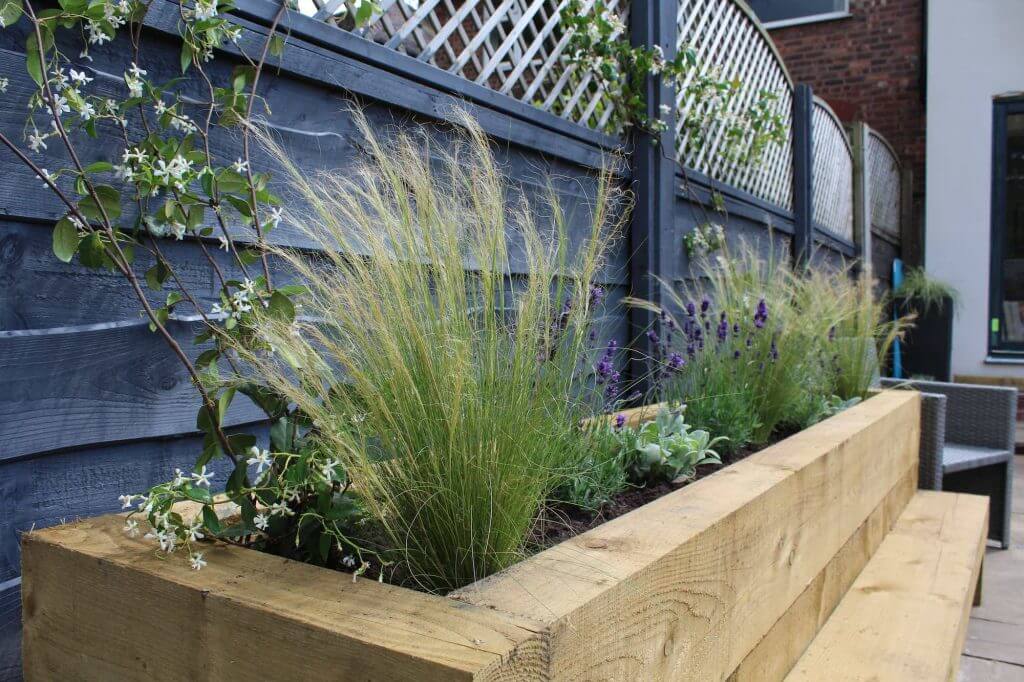
It will happily survive with some neglect, liking dry and bright positions. It will grow in dappled shade but may not produce as many flowers if it doesn’t get enough sun. It’s also super easy to grow from seed, meaning you can bulk up your borders with it relatively cheaply.
Another wonderfully low fuss high impact grass is Festuca glauca also known as Blue Fescue. It’s an evergreen (well, ever blue!) and is well-behaved. It’s great in partial shade or full sun and sends up little blue seed heads in the summer. It provides year-round interest and is a low-fuss winner whether in a container or garden border. I use its blue to bring focus to darker areas in a border or to offset against yellow flowers.
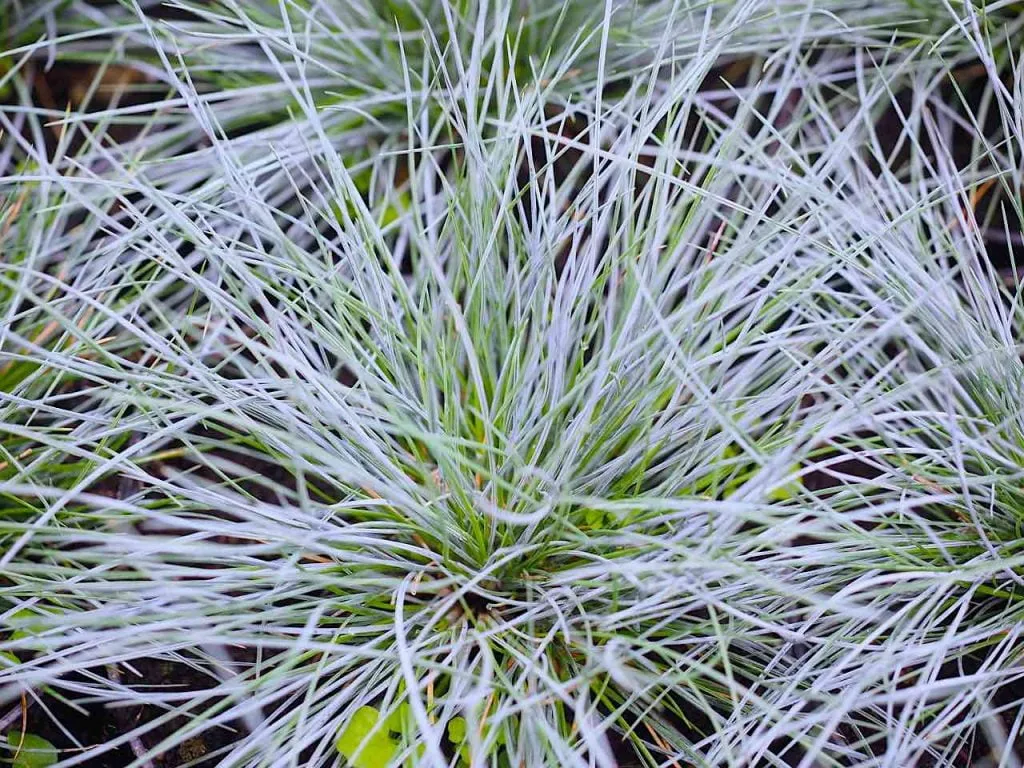
Whilst not technically a grass, its a sedge, I have listed it here as its a super performer with that ‘grassy’ look to it. It has a rusty bronze colour which is great against brighter colours acting as a really earthy foil. It’s basically fuss-free. Just don’t let it dry out as its part of the Sedge family that like damper conditions compared to grasses and it will do the rest for you!
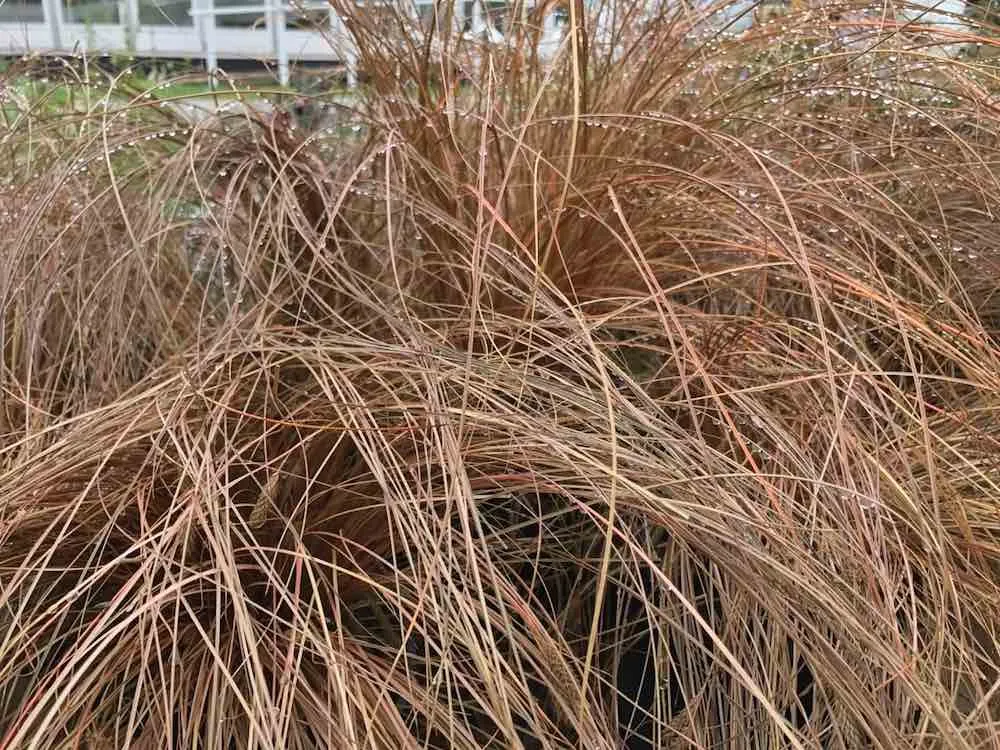
This specimen goes by many common names from Bunny ears, bunny tails, fairy tails etc. Its a really delicate grass with super soft flowers. The Karley rose cultivar has a rose tint to it. Given I love my Rose Tinted glasses its one of my favourites. It’s a late flowerer so only really comes into its own in July. Great to mix into a herbaceous border to give a pop of texture during the later part of summer. It keeps relatively small but has a high impact!
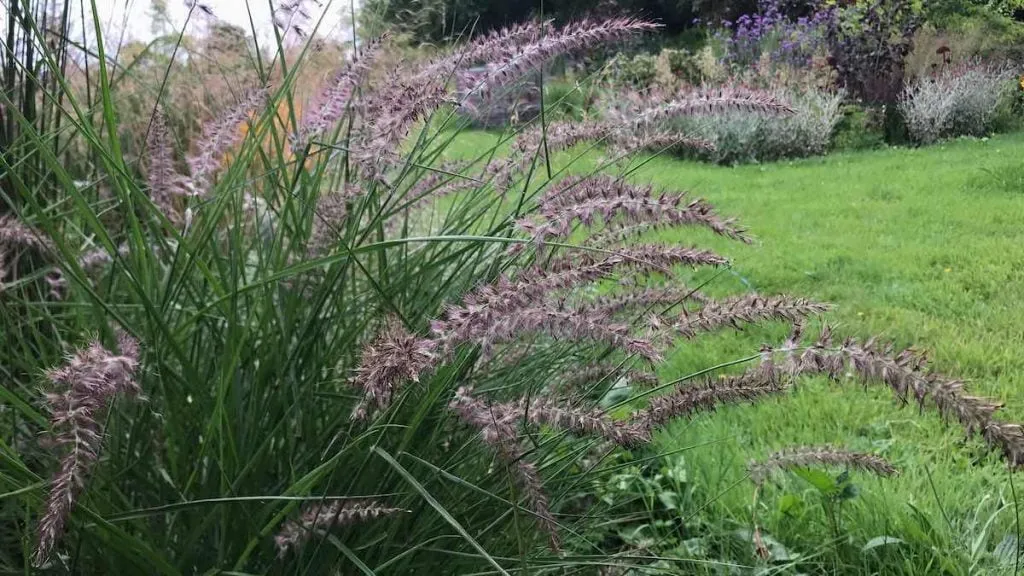
Did you know that you can take my course and learn how to become a Garden Ninja yourself? Click here for details
This variety may be a bit of a tongue twister, but this ‘Purple Moor Grass’ is delicate and easy to look after ornamental grass for a small or large garden. It will quite happily sit just 30-60cm in diameter with its dark green leaves before sending up the darkest purple flowers. This dark contrast, which is unusual for grass, means it can pop out of a border, especially when next to other bright colours. It’s one of my absolute favourites. Subtle, but it still holds its own in a herbaceous border.
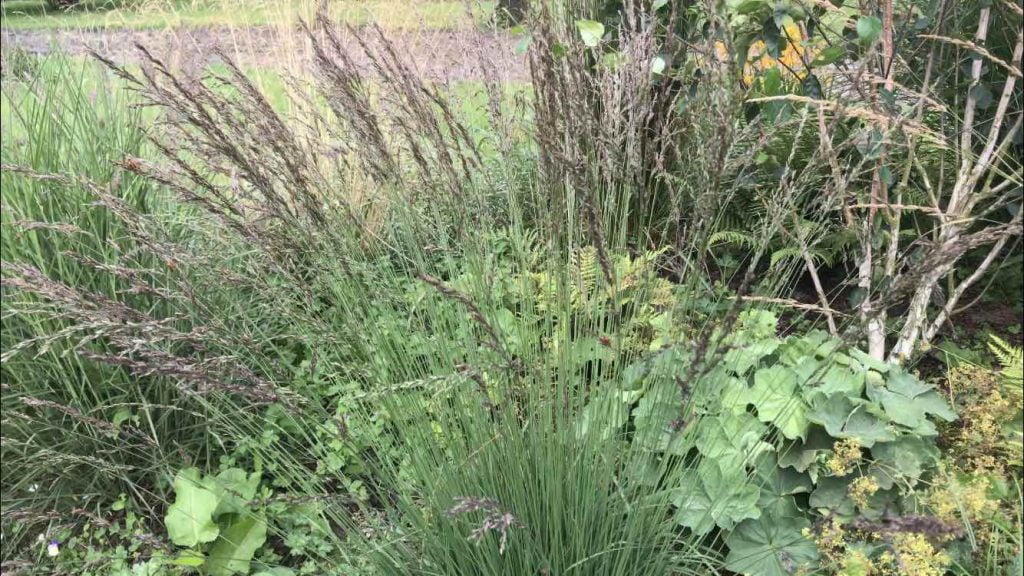
This specimen is a pretty rare one for UK gardens and is often confused with the ‘Timothy’ weedy grass species. However, it really shouldn’t be overlooked as an incredible ornamental grass for the smallest of gardens. It’s relatively shy in the border, taking up to 30cm in width.
When it flowers, it sends up long, fluffy panicles of flowers, which can brighten even the darkest border with their white plumes. A great one to set behind your border plants to give some oomph to the summer season. My Melica flowers from May all the way through to October. A really great ornamental grass with a real wow factor.
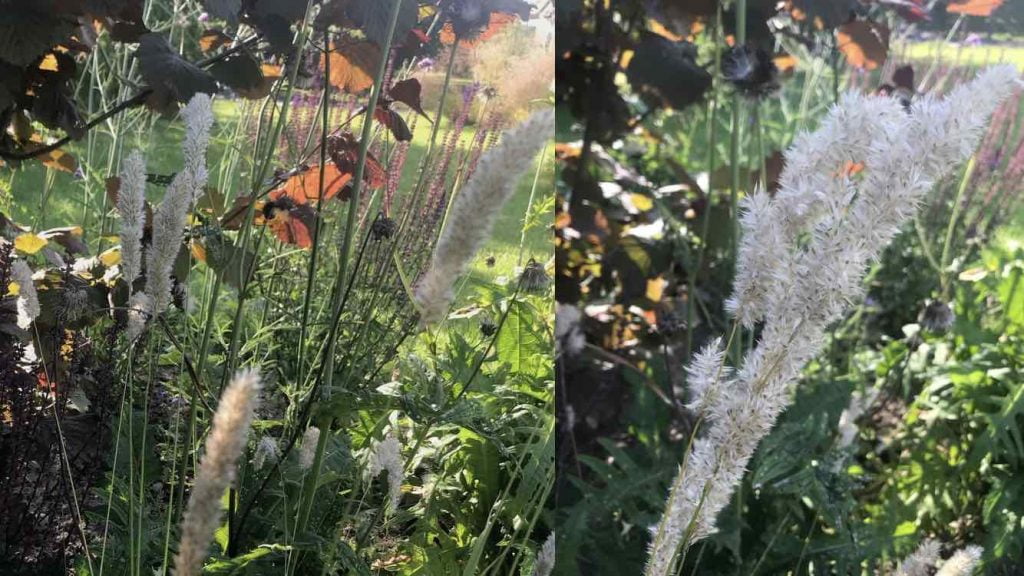
If you’ve got a larger garden or simply want more of a statement plant, then the following grasses are for you. You often hear of people using specimen trees or shrubs but why not use a statement grass instead? These examples are great for adding drama, texture and real intrigue to your garden borders.
Probably the largest and most popular of the larger specimens, this beauty will dominate a border with cool, calming movement. What’s really interesting is the low maintenance of this grass. It’s a semi-evergreen so all I do is cut back the spent seed heads but leave the green ‘crown’ or base foliage of the grass year-round. It sends up massive delicate oaty seed heads, beautiful in cut flowers or dried. It’s not for the smallest gardens or borders as the base of the plant can be quite bare. I tend to use it in larger borders with more dense herbaceous plants around it. So I can see through it to other layers of planting.
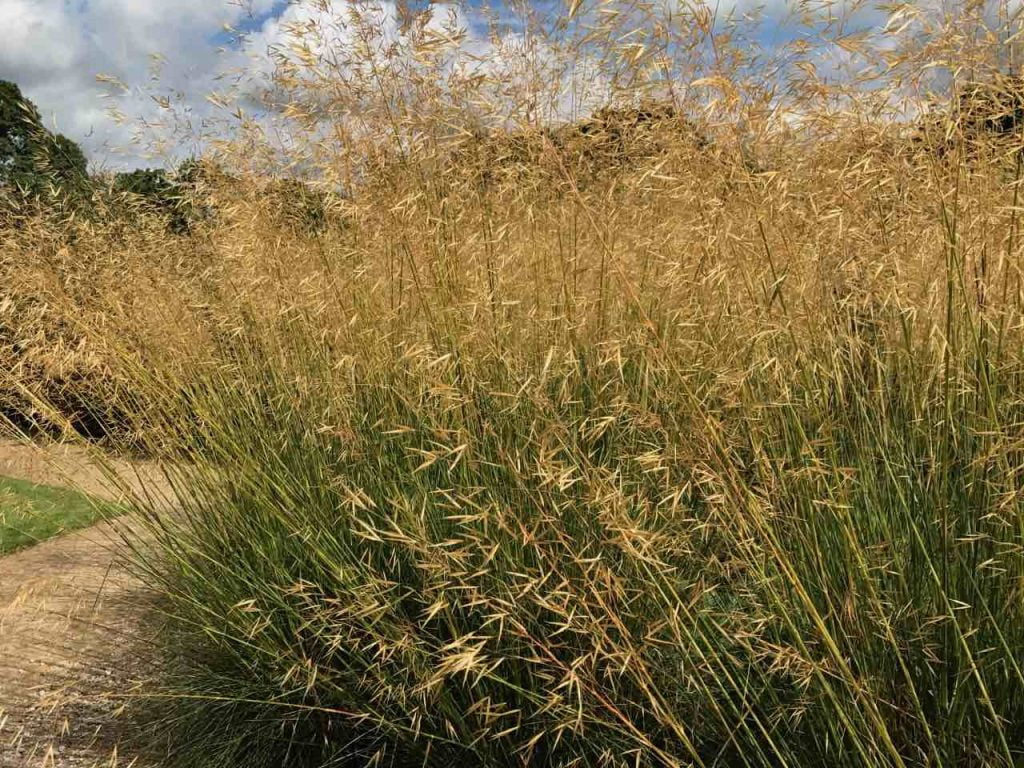
Another larger but meatier grass is from the Miscanthus species. This grass sends out huge plumes of yellow to white flower heads and reaches 1.5 – 2m in height. A real statement plant. It’s denser than Stipa, and the foliage adds bulks or a full stop to a border. Cut this one back hard in late Winter to ensure you get flowers each year. Also, wear gloves as the leaves can be sharp and can be an irritant to your arms if not careful! Well worth a place in the best ornamental grasses for a garden!
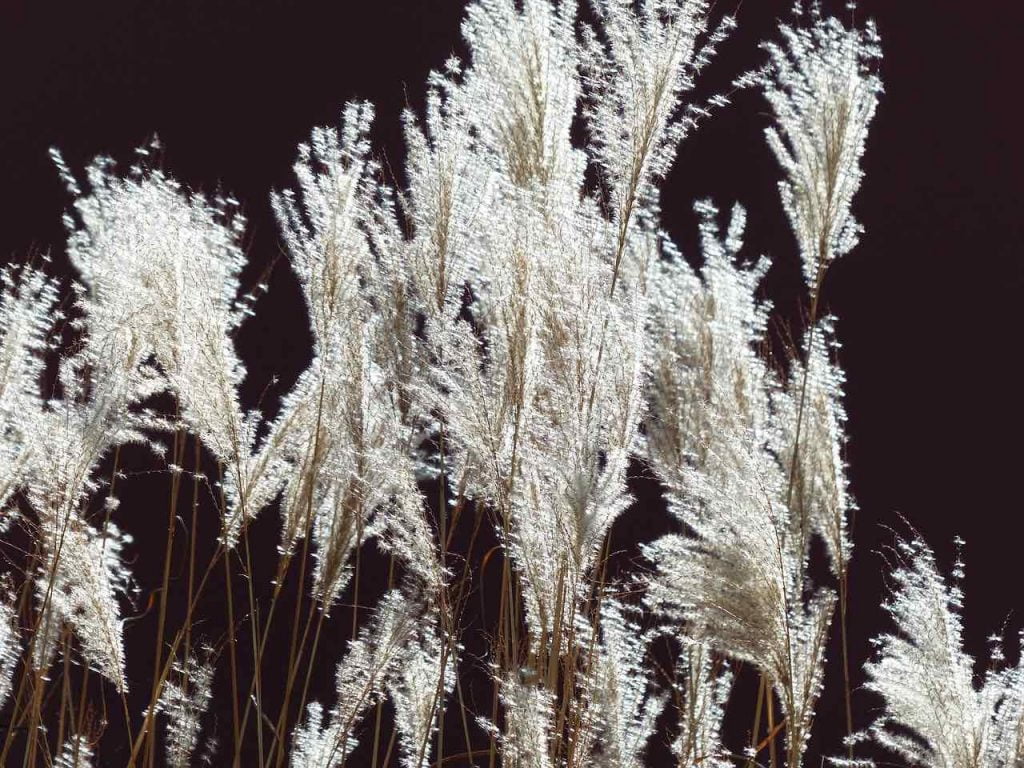
If you’re looking for a broader grass with oaty seed heads then Deschampsia offers a real extended season of interest. It starts off as a bright green tuffet of foliage before sending up its flowers then turning golden all over. A beautiful transformation which always wows visitors to my #explodingatomgarden.
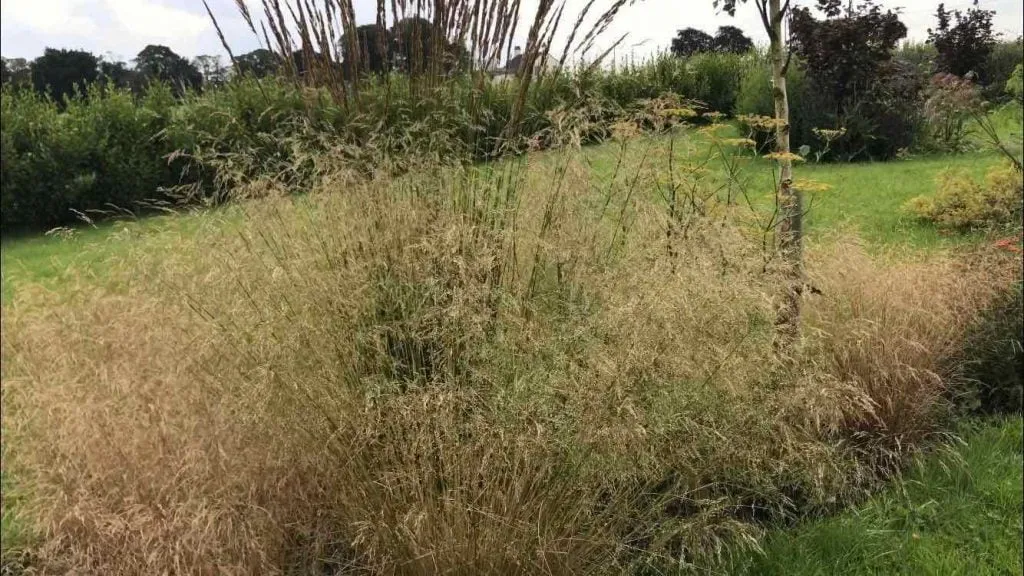
This show garden staple is one of the best-behaved tall ornamental grasses available. It’s very considerate of neighbouring herbaceous perennials and doesn’t run. It has semi-arching foliage, which forms a tight clump. Then, in June in the UK, it sends up slender oat-like flowers which turn a burnt golden colour in July.
These beauties only reach about 60cm in width in my experience but you can clump them together to get a mass effect sooner. They keep their stature all the way through winter. My only advice is to remove any broken seed heads as they have a habit of folding in half in bad weather. Other than that a simple late winter prune is all they need!

Most gardens can accommodate some beautiful ornamental grasses to add texture and diversity to the garden. If you want to make sure if you have the right garden aspect or soil type for grasses, then here are my top tips for ensuring you can grow beautiful ornamental grasses at home.
While most ornamental grasses prefer full sun, some varieties can tolerate partial shade. When selecting a location for your grasses, consider the sunlight requirements of each specific variety. Ensure they receive adequate sunlight to support healthy growth and vibrant foliage colours.
Ornamental grasses prefer well-draining soil with a slightly acidic to neutral pH level. Before planting, amend heavy clay or compacted soil with organic matter such as compost or peat moss to improve drainage and soil structure. Avoid planting in areas prone to waterlogging, as excessive moisture can lead to root rot.
During the establishment period, ornamental grasses require regular watering to encourage root development and establishment. Water deeply but infrequently to encourage deep root growth and drought tolerance. Once established, most grasses are relatively drought-tolerant and require minimal supplemental watering, except during prolonged periods of drought.
Proper spacing is crucial when planting ornamental grasses to prevent overcrowding and competition for resources. Follow the spacing recommendations provided for each variety, typically ranging from 12 to 36 inches apart, depending on the mature size of the grass.
Ornamental grasses generally have low to moderate fertility requirements and can thrive in nutrient-poor soil. Incorporate a balanced, slow-release fertilizer into the soil before planting to provide essential nutrients. Avoid over-fertilizing, as excessive nitrogen can lead to lush foliage growth at the expense of flowering or even lower growth as the ornamental grass becomes lazy!
Applying a layer of organic mulch, such as peat free compost or shredded bark or wood chips, around the base of ornamental grasses helps conserve soil moisture, suppress weeds, and regulate soil temperature. Leave a gap between the mulch and the grass clumps to prevent rotting and fungal diseases.
Annual pruning is essential for maintaining the health and appearance of ornamental grasses. Before new growth emerges in late winter or early spring, cut back the previous year’s foliage to a few inches above the ground using sharp, clean pruners or hedge shears. Remove any dead, damaged, or diseased foliage to promote airflow and reduce the risk of pest infestations and diseases.
Pruning of grasses could not be simpler if you follow my handy guide. Grasses are split between evergreen and deciduous. The former requires minor pruning each year, and the latter a brutal ‘off with its head’ prune down to the ground each February. Meaning you only have a few months with no growth. Grasses can, therefore, provide a focus for a whopping 9 months of the year!
Grasses really are a wonderful addition to any garden. Unless you really dislike them, I’d urge you to give a few a try. Their habit, movement and quiet calm can help slow down a garden border. In fact, on a breezy day, I like nothing more than sitting and watching their hypnotic movement, letting the world go by.
If you’ve found this guide helpful why not follow me on Youtube where I’ve got plenty of garden guide vlogs. You can also Tweet, Facebook or Instagram me with your questions or thoughts. Happy Gardening!


You must be logged in to post a comment.

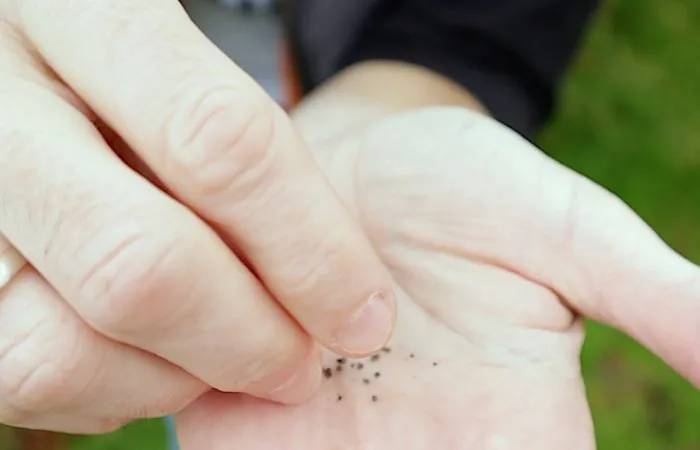
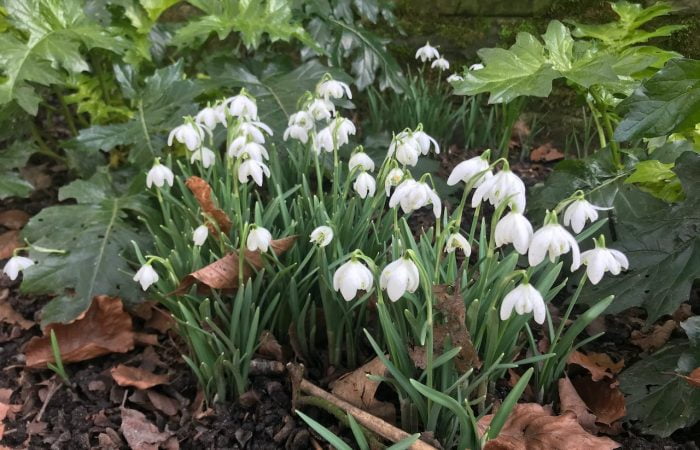
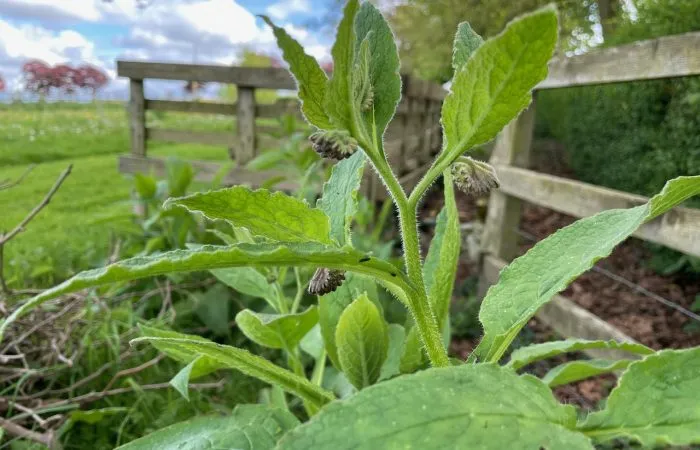
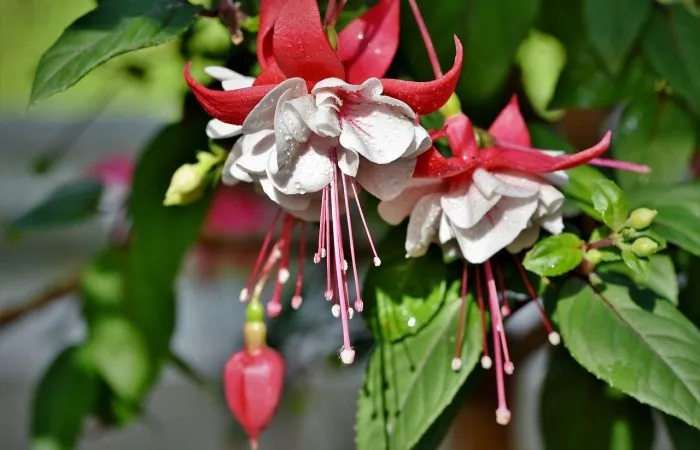
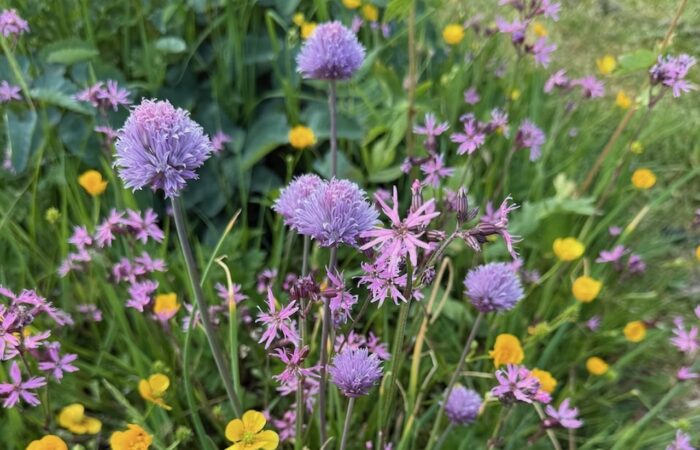
JOIN THE NINJAS

Be the first in line for new Guides, Discount codes and Offers
Hi Lee, Just watched your video on ‘Ornamental Grasses’. Absolutely brilliant!
I have a few ornamental grasses in my garden which I can never identify but your video gave me a start.
Thank you,
Derek
Thanks Derek! I’m glad it’s been of help in identifying your existing grasses! Happy Gardening!
very informative blog!
All the best!
Great item on grasses. Would be interested to know whether your ‘well behaved’ grasses self seed much. (Forwarned is forarmed!)